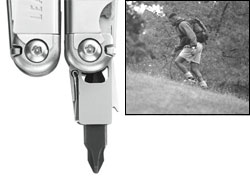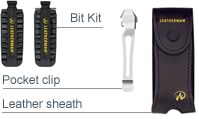Septic Tank Sewage Treatment Systems ( or septic tank systems ) provide a very crude method of treating sewage for properties which are not connected to mains drainage.
Many septic tank systems throughout the world are never maintained and so do not work properly and pollution control laws exist to try to limit the amount of environmental and health risks they cause.
These laws are getting tighter, and minimum standards have been put in place for new or replacement septic systems. In many cases you will need to install a sewage treatment plant system instead.
Always get the sewage system checked by a waste water system expert prior to purchasing a property in order to prevent a pollution problem.
Types of Septic Tank Systems Available
There are various types of septic tank systems. They consist of an underground septic tank in differing shapes and sizes, which then connects to a secondary soil treatment system, usually a land drainage system in the form of a soakaway or drainfield, or a mound soakaway.
How a Septic Tank works
Raw sewage and waste water from baths, kitchens, etc. discharges into the tank, where the solids are separated from the liquid waste. Fats and oils float to the top of the tank and form a crust layer. Feces and food scraps sink to the bottom of the tank and form a sludge layer. Anerobic bacteria which are natural colonisers in the tank "digest" this sludge by up to 70%. The dirty septic water flows out of the tank to a soakaway or drainfield. Baffles or 'T' pipes in the tank hold back the floating crust and prevent it from entering the outlet of the tank. In order that the sludge and crust layers do not become too deep, septic tanks should be emptied annually. This also prevents a higher and higher concentration of suspended solids washing out into the soakaway. Solids can block the air spaces in the soil drainage system, creating a drainage problem and the septic tank effluent will not be able to soak away or be treated by the natural soil bacteria.
Variations in Septic Tank systems
Traditional septic tanks comprise of two rectangular chambers: the first one being 2/3 of the whole and the second 1/3, usually built in brick or concrete. Strict design rules are in place and septic tanks must be designed in accordance with BS 6297 1983. The inlet pipe into the first chamber ends in a 'T' pipe which travels down the at least 450mm (18") below top water level (TWL), and the chamber must be a minimum of 1500mm (5'-0") deep from TWL. This first stage chamber is usually twice as long as it is wide. The pipe from the first chamber into the second chamber consists of an 'H' pipe and the bottom of the pipe is a min. of 300mm (12") below TWL in the first chamber and 450mm (18") below top water level (TWL) when it enters the second chamber.This second stage chamber is usually square. The outlet pipe from the second chamber of the tank also consists of a 'T' pipe with the bottom of the pipe 300mm (12") below TWL.
Vent pipes should be installed from the first and second chambers for venting the gases, mainly methane and hydrogen sulphide, that are produced by the sludge. Strong covers should always be placed completely over a septic tank to avoid children / animals falling into the tank. There are many cases of septic tank covers collapsing and many people have been killed as a result.
Nowadays, septic tanks are made in GRP and polyethylene which commonly are spherical in shape with a narrow shaft at the top to a manhole ground level. These tanks do not produce the same quality of effluent as two chamber tanks and cannot be placed in front of many septic tank conversion units.
Care should be taken to ensure that problems will not occur due to the tank rising out of the ground, when it is emptied in high water table sites. It is always advisable to install the tank with a concrete surround.
Septic tank effluent still contains about 70% of the pollutants in the original sewage and needs further treatment in the soakaway to prevent a pollution problem.
Soakaways and Septic Drainfields
The Septic Tank only provides the first part of the sewage treatment process. The soakaway is the underground soil treatment system which uses aerobic bacteria found naturally in the ground to further treat the septic tank effluent. The soil type must be suitable for a soakaway to work properly.
Percolation tests are required to determine whether a septic tank soakaway is suitable. If the soil is clay, it is not suitable for a soakaway and a drainage problem is inevitable. If you have this problem then a sewage treatment plant is the answer as they do not need a soakaway.
The soakaway consists of either a series of trenches containing perforated pipe laid on and surrounded by stone, or an absorbtion bed, or a soakaway mound, all of which are connected to the septic tank outlet by a pipe. In all cases the soakaway must be a minimum of 1.2 metres above the water table or bedrock at all times. They must also be a minimum of 200 mm. below ground level to avoid septic effluent breaking to the surface.
The pipes should be laid at a gradient of no more than 1:200In a land drain or drainfield in a septic tank system in order that the wastewater does not run to the end of the pipe, but is dispersed evenly. The perforations should be larger than 6mm (0.25") to avoid the biomatt, which forms in the trench, blocking the holes. The pipe cannot be the corrugated tubing type as this is not allowed, but must be the correct solid soakaway drainage pipe
The contaminants, pathogens, nutrients, and organic matter in the effluent are dispersed into the gravel where they are digested by aerobic bacteria. On a sloping site, the effluent may flow into a series of drop boxes or manholes with another outlet to the next pipeline set at a lower level.
Absorption beds are useful where space is limited, but they should only be used as a second choice.
Sewage Drainage Mounds
A septic treatment mound is a raised soakaway system. Aggregates are used to raise the soakaway so that it is at least 1200mm (4'-0") above the seasonal high water table or bedrock. The mound system must be designed carefully, taking into account the topography of the site, the volume of septic tank effluent to be treated and the porosity of the topsoil to avoid failure of the system and boggy areas around the base of the mound.
The design cannot be guessed and must be done by a trained professional, using test results and calculations. I have seen badly designed mounds blast a hole through the side as they have been too small for the job. Effluent from the septic tank system is piped to a pumping station tank,where it is pumped in batches into the mound pipe-work.
Septic mounds can look very attractive and can form part of the landscaping of a garden. You are not allowed to plant shrubs on top of them, but they can be planted around their base.
Septic Tank Soakaway Pits In the past, many septic tank systems used soakaway pits, although these pits are no longer acceptable under modern building regulations. They consisted of a large hole in the ground, open at the bottom, either blocked round with gaps between the blocks to allow seepage of the effluent into the soil, or simply holes filled with stones.
Some soakaway pits were made of large concrete rings with gaps between the rings and the septic tank effluent was piped into them. They were always covered, usually with a large concrete slab, but they were often a failure, as no calculations were undertaken to determine the porosity of the surrounding soil and they soon were filled with septic effluent.
The drains then fill between the pit and the tank, which backs-up the entire septic system. Site Conditions and Installation Most sites in the UK are not suitable for septic tank systems. Either the soil contains too much clay or is too porous, or the winter water table or bedrock is too near the surface. If the soil is clay, then it will not soak the septic effluent away and if it is too coarse it will not retain the effluent long enough for treatment. You could consider a non-electric sewage treatment plant instead.
Sometimes, it is possible to adapt a septic system to suit a basically unsuitable site, but this requires careful planning and design by an expert. As a general rule, if the site has either insufficient soil depth, or the wrong type of soil, it is not suitable for a septic system. Always contact your Building Inspector before deciding on a septic system.
The size of a septic system, both the tank and the soakaway area, is determined by the number of bedrooms in the house and porosity of the soakaway soil. A septic system cannot work if it is overloaded, so always bear in mind any plans you may have for extending the property before you decide on the size of the septic system. Increasing the size later results in a ruined garden.
Finally, always check with the Environment Agency and you local Building Control before deciding on a septic system. They will have a very good idea as to whether it is likely to work in your area and could save you thousands of pounds in replacing an unsuitable septic installation.
 |
Price : $60.95
|
Price : $60.95











